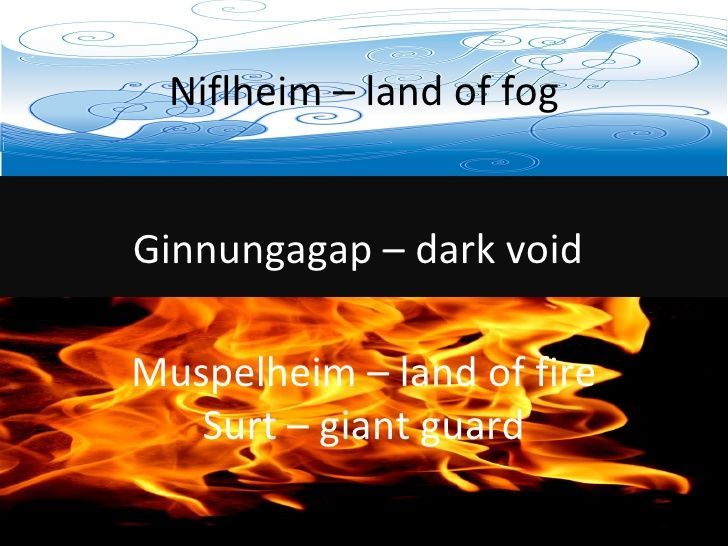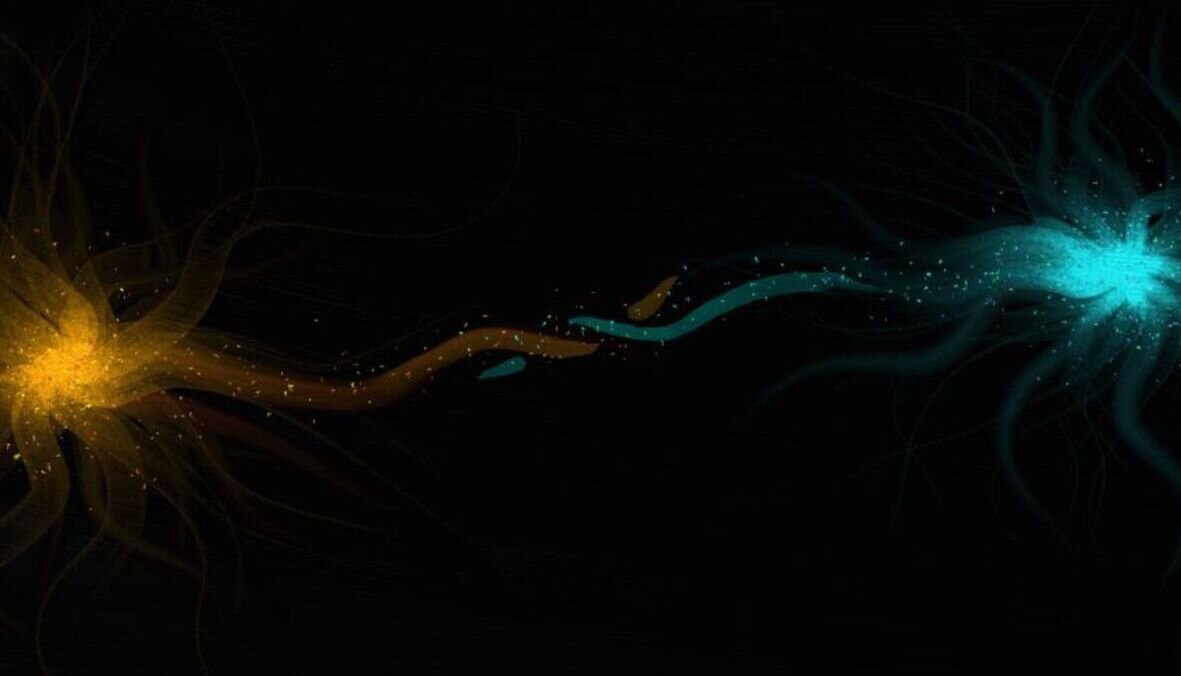According to Norse mythology, Ginnungagap is the great emptiness that existed before the creation of the cosmos. In the beginning, there was only darkness. It's a primordial void between Niflheim and Muspelheim, filled with mist.
It was the earliest time when Ymir lived. There was no sand, nor sea, nor cold waves, nor earth, nor sky, nor greenth, only Ginnungagap.
Voluspa, Stanza 3
What does the word Ginnungagap mean?
In Norse mythology and Scandinavian mythology, Ginnungagap (old Norse: ˈɡinːoŋɡɑˌɡɑp; “yawning void”) is the primordial void mentioned in the Gylfaginning, the Eddaic document recording Norse cosmology.
Ginnungagap is composed of two words, ginnunga and gap. There is no difference between the Old Norse word gap and the English word gap. Ginnunga, however, has an uncertain meaning. Jan De Vries, a Dutch scholar of Germanic linguistics and Germanic mythology, suggested that it might mean “magically charged.”
Various versions of the story are found in three poems of the Elder Edda, and in Snorri Sturluson’s Prose Edda, a synthesis of these is provided. Furthermore, it is here that all creation will once again collapse during Ragnarök, only to be reborn once the cycle is complete.
On the northern side of Ginnungagap lies the intense cold of Niflheim, while on the southern side lies the equally intense heat of Muspelheim. As the effulgence of the two met in Ginnungagap (middle of Ginnungagap), Ymir was created as the result of the cosmogonic process.
Where is Ginnungagap?
Before the creation of Yggdrasil, Ginnungagap was located between the worlds of Niflheim and Muspelheim. The two worlds mixed at Ginnungagap, forming cosmic glaciers.
From one moment to the next, two enormous lands began to form, Niflheim to the north and Muspelheim to the south. It was here that Audhumbla and Ymir would shape the fate of all beings.
To the south, in Muspelheim (Múspellsheimr), the air was filled with soot, and it was so hot that the lava was igniting, sending huge flames of fire into the sky. When the two opposite elements met in the middle of the great gap, blistering hot sparks of fire erupted from Muspelheim and melted the dense ice at the edge of Niflheim, resulting in the appearance of a being.

Ginnungagap was formed when the air from Niflheim and Muspelheim met. The fire melted the ice, and it began to drip. Some of the ice began to take the shape of a humanoid creature. This giant was Ymir, the first giant of Norse mythology, also known as a jötunn.
For example, in more modern times, the Icelandic bishop Gubrandur Orláksson used the name Ginnungegap to refer to a narrow stretch of water, perhaps the Davis Strait.
So Is Ginnungagap a space?
Yes!
The Old Norse word speaks to a void, an empty space. Ginnungagap was not one of the nine realms but rather a void that existed between Muspelheim and Niflheim, eventually filled with the body of Ymir.
Is Ginnungagap chaos?
It is understood that Ginnungagap is the Norse word for chaos.
This word refers to the vast, primordial void that existed before the creation of the manifest universe, which corresponds (both in etymology and meaning) to the Greek concept of chaos.
At the beginning of the creation of the world, there was chaos, as evidenced by the yawning void referred to as Ginnungagap.

